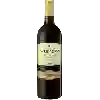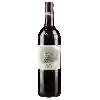
Château Lamothe-VincentLibertae
This wine is a blend of 2 varietals which are the Malbec and the Merlot.
In the mouth this red wine is a powerful with a nice balance between acidity and tannins.
This wine generally goes well with poultry, beef or veal.
Taste structure of the Libertae from the Château Lamothe-Vincent
Light | Bold | |
Smooth | Tannic | |
Dry | Sweet | |
Soft | Acidic |
In the mouth the Libertae of Château Lamothe-Vincent in the region of Bordeaux is a powerful with a nice balance between acidity and tannins.
Food and wine pairings with Libertae
Pairings that work perfectly with Libertae
Original food and wine pairings with Libertae
The Libertae of Château Lamothe-Vincent matches generally quite well with dishes of beef, veal or game (deer, venison) such as recipes of quick meatloaf, veal cutlets parmigiana or cassoulet with duck confit.
Discover the grape variety: Malbec
Malbec, a high-yielding red grape variety, produces tannic and colourful wines. It is produced in different wine-growing regions and changes its name according to the grape variety. Called Auxerrois in Cahors, Malbec in Bordeaux, it is also known as Côt. 6,000 hectares of the Malbec grape are grown in France (in decline since the 1950s). Malbec is also very successful in Argentina. The country has become the world's leading producer of Malbec and offers wines with great potential.
Last vintages of this wine
The best vintages of Libertae from Château Lamothe-Vincent are 2018
Informations about the Château Lamothe-Vincent
The Château Lamothe-Vincent is one of of the world's great estates. It offers 14 wines for sale in the of Bordeaux to come and discover on site or to buy online.
The wine region of Bordeaux
Bordeaux, in southwestern France, is one of the most famous, prestigious and prolific wine regions in the world. The majority of Bordeaux wines (nearly 90% of the production Volume) are the Dry, medium and Full-bodied red Bordeaux blends for which it is famous. The finest (and most expensive) are the wines of the great châteaux of Haut-Médoc and the right bank appellations of Saint-Émilion and Pomerol. The former focuses (at the highest level) on Cabernet Sauvignon, the latter on Merlot.
The word of the wine: Flint (smell of)
Mineral odour reminiscent of flint and flint heated during sharpening.














